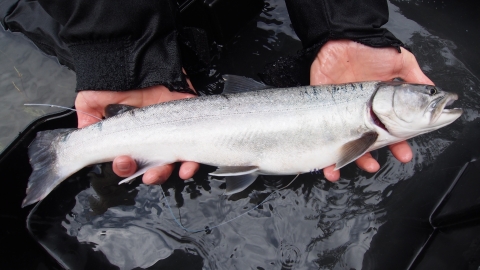What We Do
Our dedicated staff strives to conserve, restore, and improve native fish and aquatic resources throughout western Washington. This includes studying populations and their habitats; supporting habitat restoration; and evaluating restoration projects, fish hatchery practices, and human impacts. This work involves collaborations with local, state and Tribal partners. Our findings and recommendations allow land and natural resource managers to make informed decisions.
This office is part of the Puget Sound/Olympic Peninsula Fisheries Complex, which includes three National Fish Hatcheries on the Olympic Peninsula and is co-located with the complex office in Lacey.
Our Organization
Our Species
Our work focuses on native fish and aquatic species, including those of tribal importance and species listed under the Endangered Species Act. Examples of species we work with include:
- Chinook, coho, chum, pink, and kokanee salmon
- Bull trout
- Steelhead
- Coastal cutthroat trout
- Pacific lamprey
- Olympic mudminnow
- Sculpin
- Freshwater mussels
Projects and Research
Our office consists of four primary programs: Hatchery Evaluation, Fisheries Management Assistance, Habitat Restoration, and Population Assessment.
For more information on these programs, please visit our Projects and Research page.
Location and Contact Information
- Western Washington Fisheries Resource OfficeView Details500 Desmond Drive SE Lacey, WA 98503-1263






























